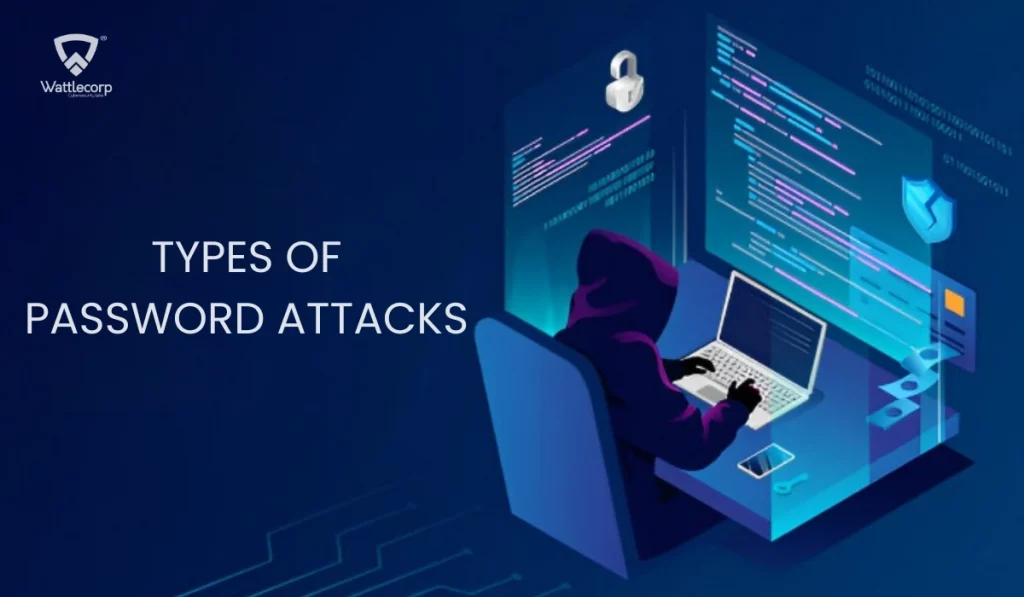As there are many forms of cyberattacks, the most prominent of all is password attacks. It is an attack where the attacker cracks the credentials of users to gain unauthorized access to their accounts. As brutal as it sounds, it can be a huge threat to account holders. Even though there is no one-size-fits-all solution for this problem, users can deploy many strategies to ensure their credentials are not easily trackable.
To identify what measures to take to secure accounts, we should explore the different possibilities and types of password attacks. Gratefully we are here to help, In this article, we will discuss common password attacks, the techniques used by attackers to crack passwords, and the effective tactics to present such attacks.
Key Takeaways
- Understanding the type of password attacks is key to implementing good precautions against such attacks. For attacks due to phishing scams, awareness can go a long way to mitigating password attacks.
- Incorporate password manager, MFA, privileged access management, passkeys, and any technological advancements that specialize in enhancing password security.
- When it comes to password stuffing, keylogger, dictionary, password spraying, and brute force password attacks, hackers take advantage of human weakness to get hold of the accounts.
Table of Contents
ToggleThe Most Common Password Attacks
Most accounts are still equipped with weak passwords, making them susceptible to attacks. Depending on the way accounts are breached there are different types of password attacks.

Understanding and analyzing these types of password attacks can help account holders uphold their guards and take necessary measures to prevent such interventions. Attackers often exploit account holder’s carelessness or lack of awareness and muddle them up with advanced technological skills to attack passwords.
What are the types of password attacks? Let’s explore….
1. Phishing
In phishing scams, hackers create an illegitimate website that mimics the original website, thus hackers lure users to provide sensitive information. Phishing scams including phishing emails and spear pishing, in which users are informed via a credible email sender to reveal their password and other credentials to log in to certain services. There is also vishing another phishing attack that is done by voice calling users to share passwords.

Almost all cases of phishing happen when account holders don’t know they are over their credentials to the attacker this can be avoided through awareness training, such that users can educate themselves and detect such mimicking websites’ illegitimate emails.
2. Password Stuffing Attack
Another human error that hackers misuse is password stuffing where users reuse the same password over multiple platforms, this can be colossal as with one credential, hackers can get into most of these accounts. Changing passwords every 3 months or remembering the credentials of each platform can be tedious so account holders often opt for reusing the passwords.

Either from the dark web or from credential theft methods, hackers can get stolen credentials and by mixing up different combinations they can get access to different accounts.
To overcome such attacks, users should change their passwords regularly and use different credentials for different services.
3. Dictionary Attack
For easy access, users use common words or phrases as their passwords, and as this can be easy to remember it can also make the attacker’s job easier. A dictionary attack is when attackers make use of common dictionary words to crack passwords. By inputting these common dictionary words into password password-cracking system, they can easily find the credentials and get hold of the accounts.

Beyond the common dictionary phases, sophisticated attackers often use personal data like birthdate, home address, and many more to crack the credentials.
4. Keylogger Attack
Another potential threat is a keylogger attack, even if the user deploys a strong password, hackers can infect the user’s device with malware or use some hardware (known as keyloggers) to get a hold on the keystrokes made by the user while they enter their credential. This is synonymous with a thief watching as the user types the password, a keylogger attack can decipher even the strongest password.

Software keyloggers can manifest in a user’s devices via phishing scams or drive-by-downloading, even as they infect users can hardly detect their presence hence their credentials and data can be easily breached even without them knowing it.
5. Man-in-the-Middle Attack
A man-in-the-middle attack happens when a hacker detects the data transferred between the user or a system to another receiver or third -party. The hacker intercepts data white it is transferred to a destination, like most password attacks neither the user nor the receiver is aware of the presence of the middleman.

By phishing emails, hackers disguise themselves as third parties inviting users to their fake sites, and as users try to log in with the credentials, these data get recorded and will be taken advantage of by hackers.
6. Brute Force Password Attack
This type of password attack is where the attacker leverages software to detect the password by guessing and many trial and error processes. This is one of the most common methods of password hacking.

As guessing work can be seen as improbable with little to no chance of cracking a password, this mostly depends on the software the hackers use. Hackers use sophisticated software that can process trillions of combinations within seconds.Highly predictable passwords can be easily deciphered, to prevent such attacks, incorporate lower keys and upper keys in passwords thus making them complex and difficult to interpret.
7. Rainbow Password Attack
Rainbow table attack shares some similarities with dictionary attacks, here, instead of dictionary words, hackers use rainbow tables to decipher the hashed passwords.

To understand how the rainbow table attack works, you need to know what hashing is. User’s credentials are not stored directly in the system they are converted to cryptographic sequences of characters and stored the password hashes, this process of mathematically converting user’s passwords to unreadable characters is known as hashing. This is specifically done by organizations for the safety of individual data even at the time of break.
Also Read: Data Breach Prevention Strategies and Best Practices
The rainbow table consists of the pre-computed hash function, common passwords, and hashes, in the rainbow table attack hacker put up with a list of common password combinations and used the hash function to decipher hashed passwords in the database.
8. Password Spraying Attacks
A spraying attack is a brute force attack in which the attackers try to illegitimately access an account by using numerous common passwords over a small range of accounts.

They can target not just one account but millions of accounts at the same time.
How do we Prevent Password Attacks?
As we have an overall picture of hackers trying to crack passwords and how brutal it can get, let’s analyze the possibility of preventing such password attacks.
- Switching to passkeys: Instead of using conventional passwords, devices or password managers can automatically generate passkeys when you are trying to create a password. Since they are not reused they are likely to be compromised compared to traditional passwords.
- Use strong passwords: Sometimes there won’t be an option for passkeys and will have to create a strong password that mostly doesn’t contain easily attainable personal data or common password types. Use upper and lower keys, numbers, and signs, to create a complex password.
- Password managers: The major reason for resuing the password on multiple platforms and creating crackable passwords is due to the difficulty of remembering them. A password manager helps users create strong passwords, securely store them, generate passkeys, and generate multifactor authentication codes.
- MFA: Enabling multi-factor authentication can ensure more layers of security for the account. With MFA users should enter additional authentication factors to log in apart from the user ID and password.
- Implementing a captcha: One of the easiest ways to prevent automated password attacks is to install a captcha, as humans can easily surpass the captcha challenge, automated tools will find it difficult to overcome.
- Using biometrics: Using a fingerprint or facia shape as biometric authentication instead of a password can be more effective as hackers cannot imitate a user’s biometrics.
With the evolving technology there will always be a new variant of password attack. As precaution is the best cure, users should ensure they create a strong password and leverage all technological advancements at their disposal to improve the security of their credentials.
Awareness regarding the common types of password attacks and their causes is another way to prevent password attacks.
Frequently Asked Questions
There are many ways to breach a company’s data of one the ones that provide unprecedented access is a password attack. Once the hacker manages to log into the organization’s account via password attack they can completely take over the account, this can effectively tarnish the business.
What password attackers target is mostly human weakness, reusing the same password over different platforms, using weak passwords, not changing passwords not regular intervals and not implementing MFA are some of the biggest weaknesses in password security.
Follow the steps to improve password security:-
Switch to passkeys from conventional passwords
Use password managers
Enable MFA
Use a captcha to prevent an automated attack
Create strong passwords
Using biometrics






